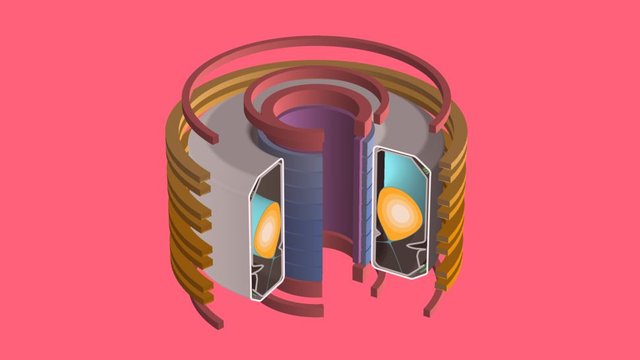Two technical advances on different sides of the globe could make fusion a practical power source.
First, a new tungsten alloy could help researchers contain fusion reactions. Tungsten is one of the heaviest and hardest natural elements. Importantly, tungsten has one of the highest melting points of known minerals, around 3,410 degrees Celsius.
Hence, a wall of tungsten bricks could contain fusion reactions in a facility. However, most tungsten alloys are too soft and unstable to contain a fusion reaction. One reason existing tungsten alloys fail is metallurgists have to add softer materials such as iron, copper, and nickel to stabilize the material.
Is Tungsten the Key to Fusion?
A new tungsten bulk material could be strong and stable enough to contain fusion reactions, The South China Morning Post reports. Researchers at the Chinese Academy of Sciences in Heifei, Anhui province, developed the material. The Chinese government’s fusion reactor program financed the research, The Morning Post claims.
“The higher the tungsten purity, the lower the risk for fusion energy production,” Professor Fang Qianfeng tells The Morning Post. “In the best-case scenario, we want nothing but tungsten in the wall material because impurity can cause some unpredictable disturbance to fusion reaction.”
Fang is a researcher who helped develop the material. Fang thinks the new material is pure enough to contain fusion. Impurities make tungsten too weak to contain fusion.
There could be military applications for stable tungsten. For example, “the Rods of God,” a theoretical bunker-busting weapon proposed by US Air Force researchers.
The Rods of God is a bundle of 20 foot long tungsten rods a satellite could drop on enemy positions from space. The rods could hit a target at 10 times the speed of sound and destroy anything they hit.
Other uses for pure tungsten could be tungsten-tipped bullets or missiles or tungsten projects rail guns could fire. A rail gun is an electromagnetic canon with a 200 kilometer (125) mile range. The Chinese People’s Liberation Army Navy (PLAN) is testing rail guns for use on future warships, The South China Morning Post claims.
Can Artificial Intelligence Make Fusion possible?
A test shows artificial intelligence (AI) could manipulate the super-hot plasma inside a fusion reactor. Scientists at the Swiss Federal Institute of Technology in Lausanne (EPFL) used a deep reinforcement learning (RL) to control around 100 plasma shots in a Tokamak reactor, Live Science reports.
The AI proved adept at positioning and shaping plasma inside a tokamak fusion reactor, EPFL physicist Federico Felici tells Live Science. Those shapes include the snowflake thought to be the best configuration for fusion.
The AI also shaped plasma into droplets, which could make it easier to manipulate. The AI operates the magnetic coils that control plasma inside the chamber. Felici believes the AI could make more complicated shapes with the plasma.
Felici and his team used an AI built by Alphabet (GOOGL) subsidiary DeepMind. The research at EPFL is part of the effort to a control system for the gigantic ITER tokamak reactor several governments are building in France.
However, researchers could use the same deep reinforcement learning technology to control plasma in any fusion reactor. In particular, private fusion companies; such as Commonwealth Fusion Systems, could use Deep Mind’s RL system to control their reactors.
Commonwealth is developing a commercial tokamak fusion reactor in Massachusetts. Commonwealth could easily buy both DeepMind’s RL system and the tungsten technology. The company claims to have $1.8 billion in funding for its research.
It appears technological advances could make commercial fusion possible. In particular, I think a combination of tungsten and AI could help scientists build a tokamak fusion reactor that could produce electricity commercially.
Originally published at https://marketmadhouse.com on March 8, 2022.
